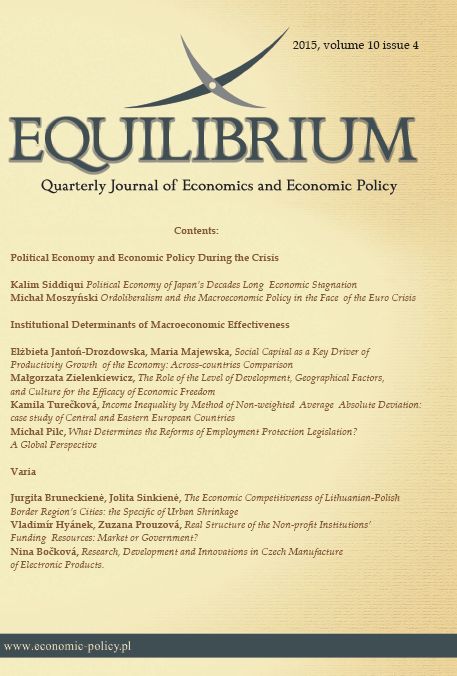Political Economy of Japan’s Decades Long Economic Stagnation
Political Economy of Japan’s Decades Long Economic Stagnation
Author(s): Kalim SiddiquiSubject(s): Economy, National Economy
Published by: Instytut Badań Gospodarczych
Keywords: Japan; Political Economy; Stagnation; Mounting Debts and growth rates
Summary/Abstract: It is hard to imagine that after Japan’s miracle post-war growth it would go on to suffer more than two decades of stagnation. Although there have been some short-lived periods of recovery, such as in 1995-96, the average growth rate over the period of 1991-2014 was a mere 1%. Despite historically low interest rates and a series of fiscal stimuli, the growth has not revived. Despite the long economic stagnation, Japan still retains its strength in many areas. Its human and physical capital formations are among the highest in the world. The volume it spends on research and development is equally impressive. It still has world-leading firms and modern technologies. The methodology to be followed here is derived from the aims of the study and comparisons of international statistics provide the main means of addressing the research questions and the objectives of this paper. The study concludes that the neoliberal ‘market-centred’ policies have brought inequality, stagnation, and fiscal crisis to the state. Therefore, a radical critical political economy is required to analyse the situation more objectively, one which would mean increased levels of welfare and people-led measures.
Journal: Equilibrium. Quarterly Journal of Economics and Economic Policy
- Issue Year: 10/2015
- Issue No: 4
- Page Range: 9-39
- Page Count: 30
- Language: English

